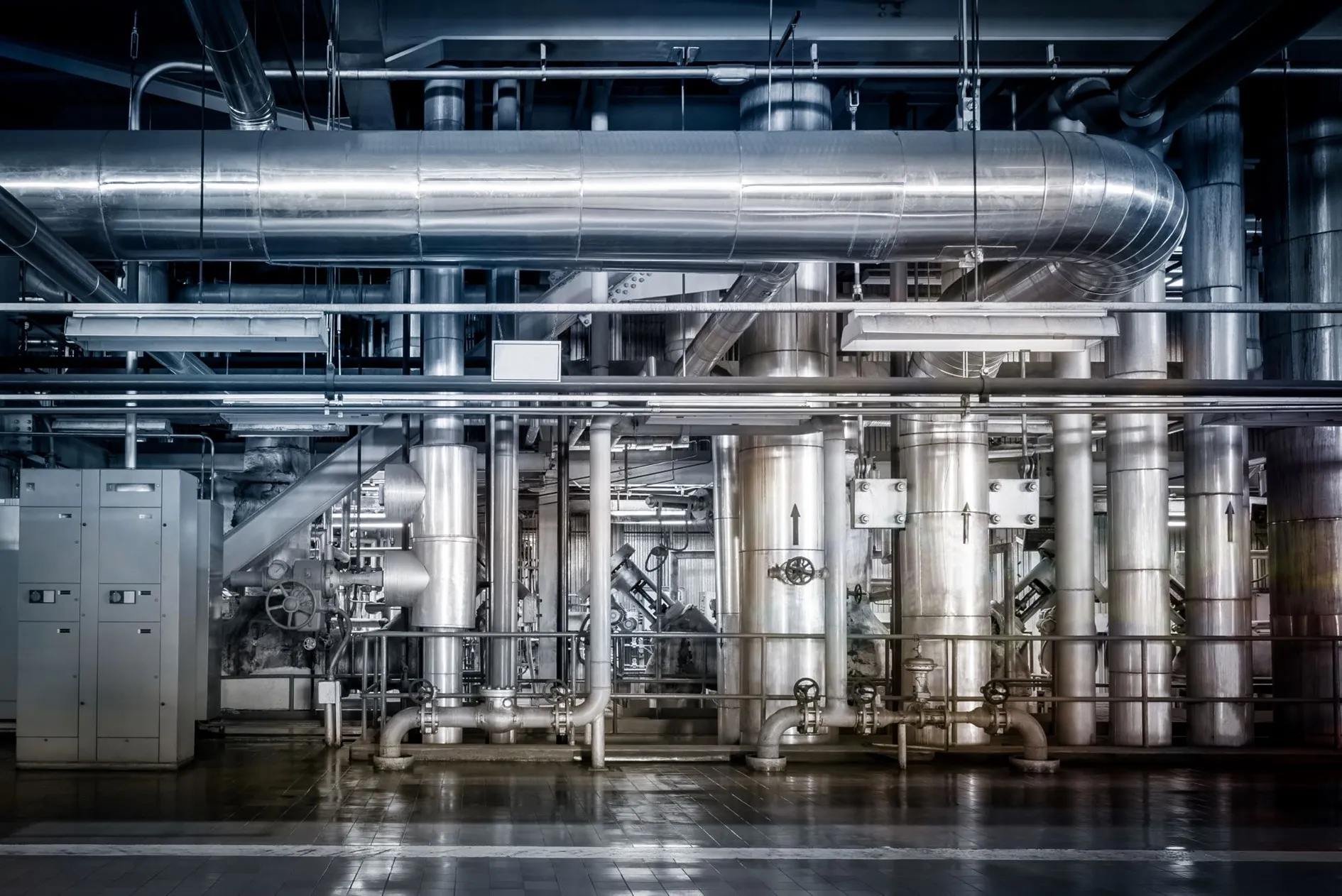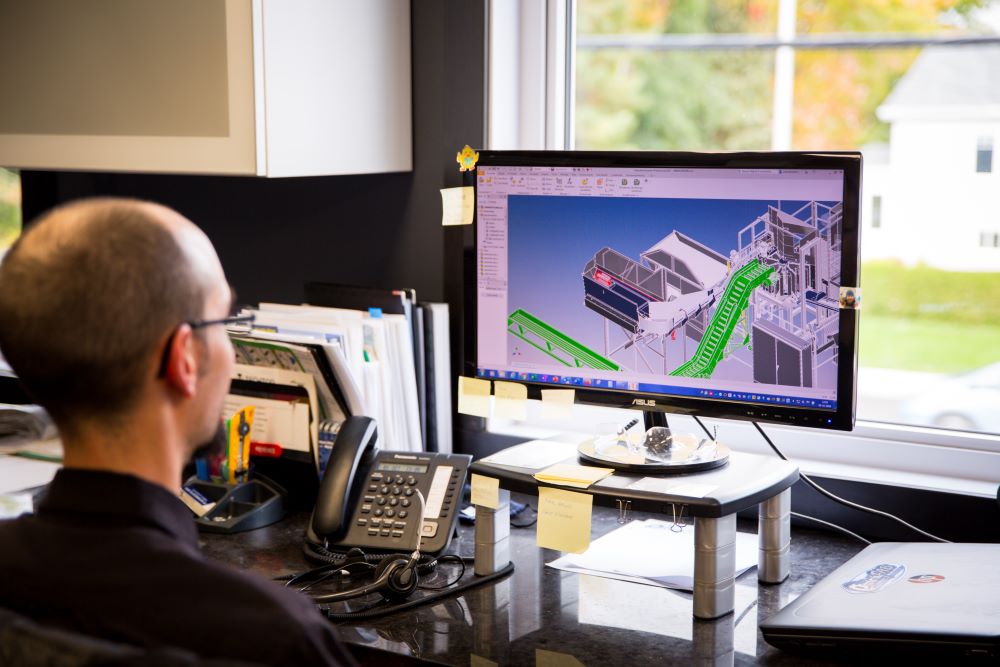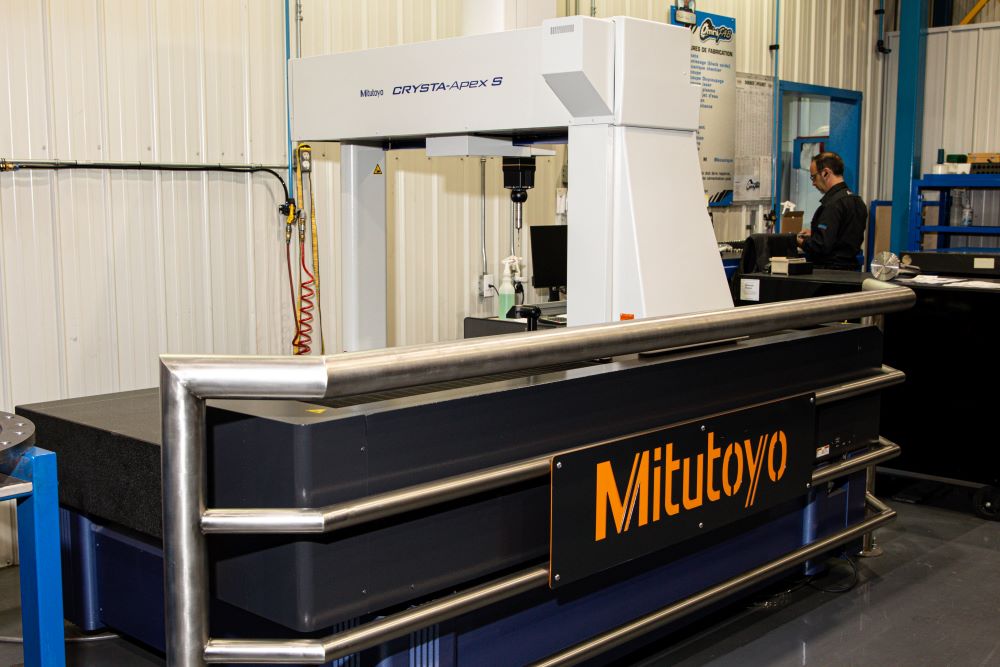The term “manufacturing drawing” isn’t something you’d hear in everyday conversation.
It is primarily used in sectors such as engineering and mechanical manufacturing.
Since these two sectors are among Omnifab’s areas of expertise, we’ve decided to demystify the concept and explain what a manufacturing drawing is.
Definition of a Manufacturing Drawing
A manufacturing drawing is a technical document that represents a part or assembly of parts in the form of a drawing or diagram. It contains detailed information that facilitates the analysis, manufacture, or assembly of the object in question.
Manufacturing drawings are specifically used to communicate mechanical design specifications to engineers, manufacturers, technicians, and other stakeholders involved in the manufacturing process.
Creation of Manufacturing Drawings
The process of creating manufacturing drawings has evolved from traditional paper-based methods to the use of CAD (computer-aided design) industrial drafting software. These software tools enable engineers and designers to create highly detailed 3D models of parts and assemblies.
These models can then be digitally converted into 2D drawings that show the specific details of each part, including dimensions, tolerances, materials, and surface finishes.
A 3D scan of a part can also serve as a starting point for creating a manufacturing drawing.
The importance of Manufacturing Drawings
Manufacturing drawings are essential in the production of functional mechanical parts with precise dimensions and specifications.
They provide comprehensive information on the geometry and physical characteristics of each component to be produced, along with detailed instructions for manufacturing processes such as machining, welding, assembly, and inspection. Manufacturers use these drawings to ensure that each component is produced in accordance with precise specifications and to prevent costly errors.
Manufacturing drawings are also useful for communication among manufacturing team members. They allow mechanical engineering departments to communicate more effectively with machine operators, quality inspectors and other team members to ensure that everyone understands the specifications and requirements for each part.
In addition, manufacturing drawings are often used to document and archive design specifications and manufacturing processes. With this in mind, all revisions made to a project are recorded, making it possible to archive the history of modifications. Prototype, part and machine drawings are usually kept in manufacturing files for future reference, quality audits and process improvements.
Call on our industrial designers
The 3 Types of Manufacturing Drawings
There are three main types of manufacturing drawings:
The choice of drawing is typically based on the specific information that needs to be communicated.
1 – Assembly Drawing
An assembly drawing represents an collection of parts, showing how each part fits together and interacts with the other parts in the assembly. It can include sectional views to show the interior of the assembly, detail views to highlight small features, and most importantly, a BOM (bill of materials). A BOM is a comprehensive list of all items, parts, raw materials, and assemblies required to manufacture a product.
Additionally, an assembly drawing can be used to identify the necessary components for product assembly and to specify specific assembly tolerances.
It can also be used for assembly planning, as it shows how each part is to be assembled, and in what order.
2 – Exploded View Drawing
In an exploded view drawing, each component of the assembly is shown individually, separated from the other components and arranged in a logical, functional sequence. Labels and annotations can be used to clarify the position and function of each part within the assembly.
The exploded view drawing is straightforward to consult and is often intended for readers with no relevant qualifications (e.g., an IKEA furniture assembly instructions).
3 – Detail Drawing
A detail drawing represents a single part of an assembly, providing comprehensive information about its shape, dimensions, geometric tolerances, surface finishes, and other specifications necessary for its manufacture.
Choose our Industrial Drafting Service
In conclusion, a manufacturing drawing is a technical document that communicates the design specifications of a part, object, or product to all parties involved in the manufacturing process.
At Omnifab, our industrial design department is equipped to produce manufacturing drawings of the highest quality and accuracy. We also offer a range of other types of engineering drawings essential to your projects, including:
- Factory layout
- Hydraulic diagrams
- Pneumatic diagrams
- Engineering drawings
- Preliminary drawings
- Shop drawings
- Machining
- Mechanically welded assemblies
- Sheet metal
- Assembly
- Roughcasting
Contact us to discuss your project!




